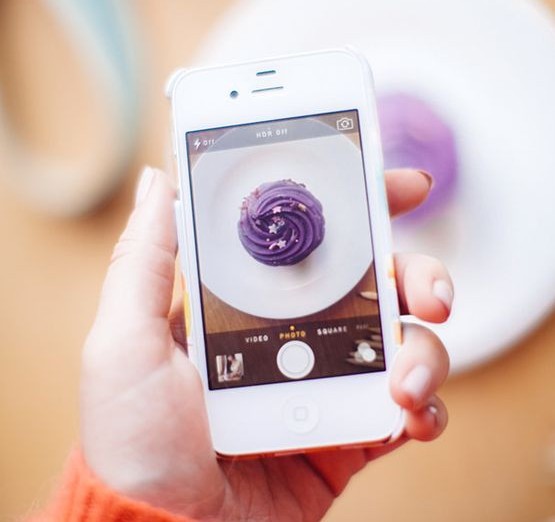
For many, Instagram has become an inexhaustible source of information, aesthetics and, most importantly, inspiration. Apart from incredible fashion, fitness and home improvement ideas we can find or share here, there is one trend that occupies the major portion of practically everyone’s Instagram feed. If you were thinking “food porn”, you guessed it right.

Parallel with the rise of this trend at such an astounding pace, many have started questioning its overall effect on people’s reactions, attitudes, motivation and diet. Furthermore, even numerous university-based researches on this subject matter have been conducted so far. And, what could be concluded from all this is that, similarly to any other social phenomenon, the Instagram diet has its good and bad sides.
When did Taking Pictures of Food become More Important that Eating it?
Today, our relationship with food has become more complicated than ever. In the past, ordering pasta in a luxurious restaurant was all about the hedonistic appeal. Finger-licking food, a bottle of expensive wine and relaxing atmosphere- is there anything more appealing? However, it seems that these values are forgotten a long time ago. Just imagine this. You’ve ordered the same delicious pasta and the same expensive wine in the same restaurant, with the same relaxing atmosphere. Then, you slowly take out a phone from the pocket and take dozens of photos of the meal in front of you until you find the best one. Once you’ve finished writing the perfect comment, choosing the right hashtag and altering your photo with at least ten filters, another 20 minutes have already passed. What a disappointment, the precious hedonistic moment is gone, the food has turned cold!

Taking pictures of some special meals that have had an immense impact on you is all right, but spending almost a half an hour instagramming every time you eat something is not only annoying, but might signal a serious problem. Some people get so addicted to the “food porn” trend that they start caring more about their followers’ likes than about enjoying the moment.
Instagram is not All about Sweets and Junk Food. It can also motivate you to lead healthier life.
One of the major mistakes people make is relating the Instagram diet with millions of photos of sweets, cocktails and junk food. As the number of people trying to eat clean and lead a healthy life has risen in the last few years, Instagram has also become Mecca for them, as well. Therefore, all you need to do here is to know what you’re looking for. Simply replace the regular “food porn” channels you follow with inspiring, healthy-eating Instagram accounts, from vegans and chefs to fitness fanatics. Here you can find the plethora of amazing images of well-balanced food, as well as some additional ideas on how to stay healthy and fit all the time.

Foodstagramming helps us experience the food we’ve never tried before.
One of the major perks of Instagram is that it takes us to the places we’ve never visited and helps us experience things we’ve never heard of before. The same goes for food. It doesn’t matter if you just want to sit and stare at these images for hours or instantly find the recipe and prepare the meal on your own, your gastronomic experience will widen with every #foodporn hashtag you glance at.
Put simply, people respond well to joyousness. Seeing some mouthwatering smoothie, pizza, waffle, veggie salad or cake images will definitely trigger a particular reaction in you and provide you with new ideas. After all, it seems that, apart from being extremely annoying, people’s obsession with taking pictures of food wherever they are can also be creative.

Is the Instagram Diet New Obesity Cure?
If you’re keen on chewing gum, then you are familiar with this feeling for sure. It doesn’t matter how delicious the gum is, sooner or later, its taste wears off or it simply becomes boring. This is exactly what a recent BYI study aimed to prove. According to the results of the research, looking at too many photos of food can actually make it less enjoyable to eat. Constantly viewing the pictures of the same food might make your brain feel like it has already experienced eating it. This way, you develop so-called sensory boredom, not wanting to try this food any more. So, if you have some special belly-buster, just look the photos of it and stare at them until you start experiencing a mild nausea. Not bad for losing weight, is it?
All in all, social media have already changed the way we talk, look for friends, take photos or, in this case, eat. Therefore, foodstagramming is just another social phenomenon that will either start growing or gradually lose its importance among Instagram users. Till then, we should simply find the way to adjust to it and balance our, already complicated relationship with food.
















